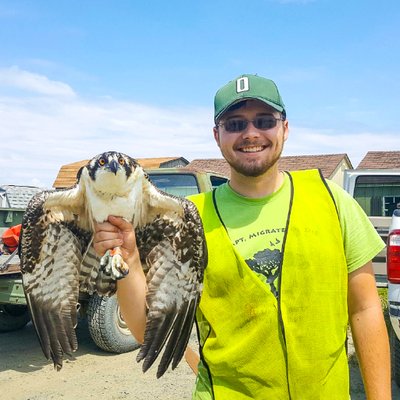
OHIO alum Kyle Brooks
by Kristin Distel
At Wayne National Forest, OHIO alum Kyle Brooks (’17) has established a career that perfectly combines his interests and talents. Since June 2018, Brooks, who majored in Wildlife and Conservation Biology, has worked as the WNF Photojournalism Resource Assistant, which is part of the National Forest’s Resource Assistants Program.
Public Communication and Education
Brooks’s photographs have been featured in the Forest’s promotions, advertising, research, reports, and other areas. He notes that his workdays occasionally consist of spending twelve hours in the field taking photographs.

Brooks spends much of his time photographing in the field
“My photos have been used in Wayne National Forest news releases and in the resulting newspaper articles, as well as in presentations given to Eastern Region staff and leadership. We use my photos in public presentations, PowerPoints, newsletters, and Inside Forest Service—a weekly national-level Forest Service update,” Brooks explains.
A key part of Brooks’s job is communicating the Wayne National Forest’s revision plans to the public and, through photojournalism, assisting with public relations outreach.
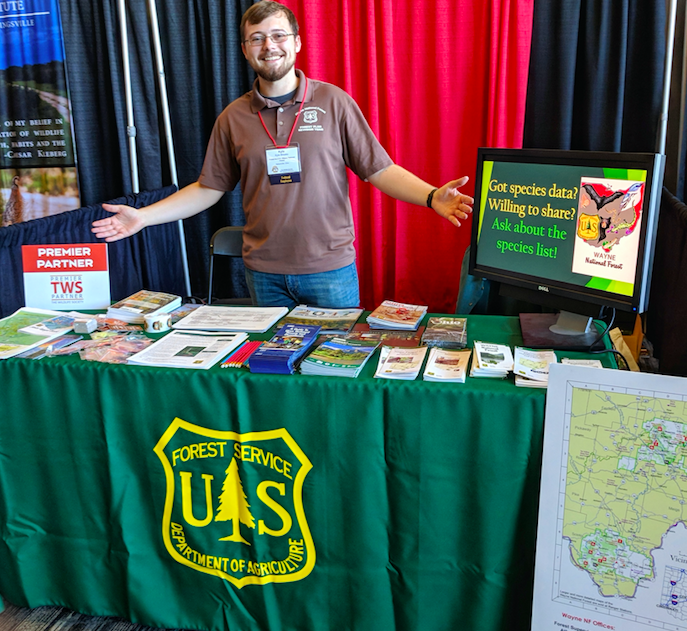
Brooks staffing United States Forest Service table at the 2018 Wildlife Society Conference
“I’m interested in environmental education, and an important part of what I do is relaying to the public what’s going on in the Wayne National Forest and how they can become involved. To do that, I create flyers for events, add photographs to our newsletters, take photos for WNF presentations, and cover the Forest’s events.”
From Internship to Employment
Brooks’s interest in working for Wayne National Forest grew out of an internship he completed during his senior year at OHIO.
Ohio University has established a partnership with WNF in which student interns and faculty from OHIO team up with the Forest’s staff members on some of the Forest’s initiatives. These projects include the Baileys Trail System, which focuses on the creation of a mountain bike trail, and the Long Ridge Southeast Oak Project, which is a prescribed burn project intended to foster the growth of oak trees.
“Without that internship, I wouldn’t be at Wayne National Forest right now,” Brooks states. In particular, the blog posts he completed about his internship experience—which featured his remarkable photographs—helped secure him a job after graduation.
- Read Brooks’s internship blog posts on Awesome Arthropods and Snazzy Snakes.
“In my interview, the Forest staff members said they really liked my blog posts, and they wanted to know if I was interested in doing that type of work on a more permanent basis,” he explains.
Before returning to work at Wayne National Forest, Brooks worked at a variety of jobs in several states, including The Ecology School in Maine, where he taught the geology of beaches and tide pools, along with forest ecology.
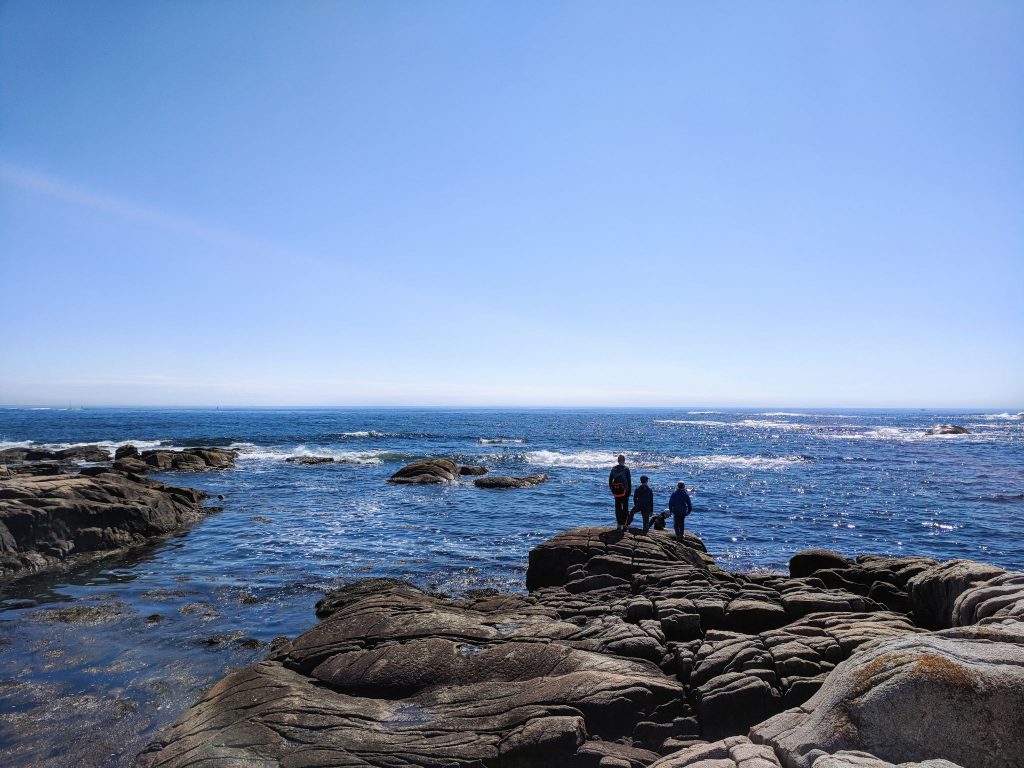
The Ecology School in Maine, where Brooks taught children about the environment and its resources
Once Wayne contacted him about the chance to return to Athens, though, Brooks snatched up the opportunity and returned to the site of his exciting internship.
“My transition from an intern to an employee has been really interesting because as an intern, I worked mainly in the field and didn’t see much in the way of day-to-day office operations. Now that I have that field experience under my belt, I’m seeing the Forest’s daily operations. This combination has given me a well-rounded understanding of what it’s like to work in the Forest Service,” Brooks remarks.
He notes that his employment is part of a collaboration between the United States Department of Agricultural Forest Service and a nonprofit organization called Greening Youth Foundation.
“Programs like this are a stepping stone, similar to an internship,” he explains. “After six months of full-time work, I can apply for a job with the federal government using a special hiring authority. My current job will give me a real advantage in applying.”
Intensive, Personalized Training at OHIO
Both in terms of environmental research and communication skills, Brooks’s studies at OHIO helped prepare him for the work he does today. For example, Brooks served in Dr. Shawn Kuchta’s lab alongside graduate student Maggie Hantak, where he worked on a diet study for Hantak’s research on red-backed salamanders.
“Having a science background has been great for my work at the Forest because I understand the processes and background of what Wayne National Forest is doing. When I communicate to the public, I understand the process or issue I’m discussing from a scientific angle. I don’t necessarily have to spend a lot of time researching a subject that I need to communicate on as someone with no biology background might have to,” he explains.

Lake Vesuvius
Brooks takes the Forest’s Long Ridge Southeast Oak Project as an example.
“When we’re talking with the public about why we do prescribed burns, for instance, I already understand and can explain the historical aspects of fire in deciduous forests. I can convey that fire on the landscape was much more common in certain places for thousands of years, but those fires stopped in the 1900s because humans repressed them,” Brooks notes.
Communication skills, too, played a key part in Brooks’s education and professional development. He notes that his mentor, Dr. Viorel Popescu, emphasizes the importance of science communication in every course.
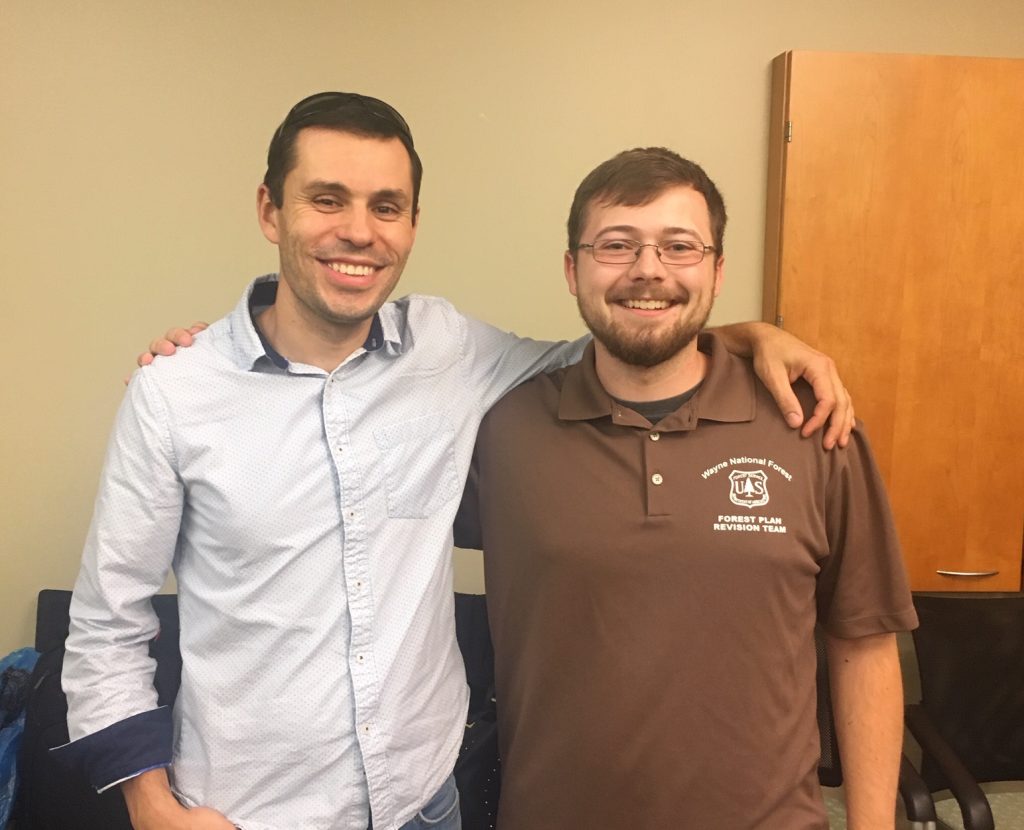
Dr. Viorel Popescu (left) and Kyle Brooks
“Dr. Popescu tries to make all of his students realize the importance of communicating with the public and conveying science-based knowledge in whatever they do. He’s a great model of that. It’s great to see someone who is invested in communicating science to the public and is doing so effectively, not just spouting jargon,” Brooks states.
Brooks adds that many of his other Wildlife Conservation Biology professors similarly stressed the importance of conveying clear information to the public, which he incorporates daily into his own work.
“In my position, I’m communicating not just science but also events,” he notes. “I show the public what’s happening on their land and give them a voice—it’s their land. They should understand what’s happening on their land.”
Arts & Sciences Education ‘A Fantastic Foundation’
Brooks remarks that the broad scope of an arts and sciences education makes him a more well-rounded individual and employee. Just as his career with Wayne National Forest allows him to merge his interests in photography, environmental sciences, and educating the public, so too did his education at OHIO allow him to build upon and blend his various skill sets.
In this way OHIO fostered Brooks’s primary interest, which is environmental education.
“Without the knowledge and skills that OHIO gave me, I wouldn’t have a career in environmental education. OHIO gave me a fantastic foundation!” he exclaims. He also regularly draws upon the knowledge he gained from courses like Dr. Glenn Matlack’s “Americans and their Forests” and Popescu’s “Animal Conservation.”
“In my job, I have to effectively distill those lessons into a couple of sentences that a person can read and then understand, ‘Oh, that’s why the Forest is doing that,’” Brooks remarks.
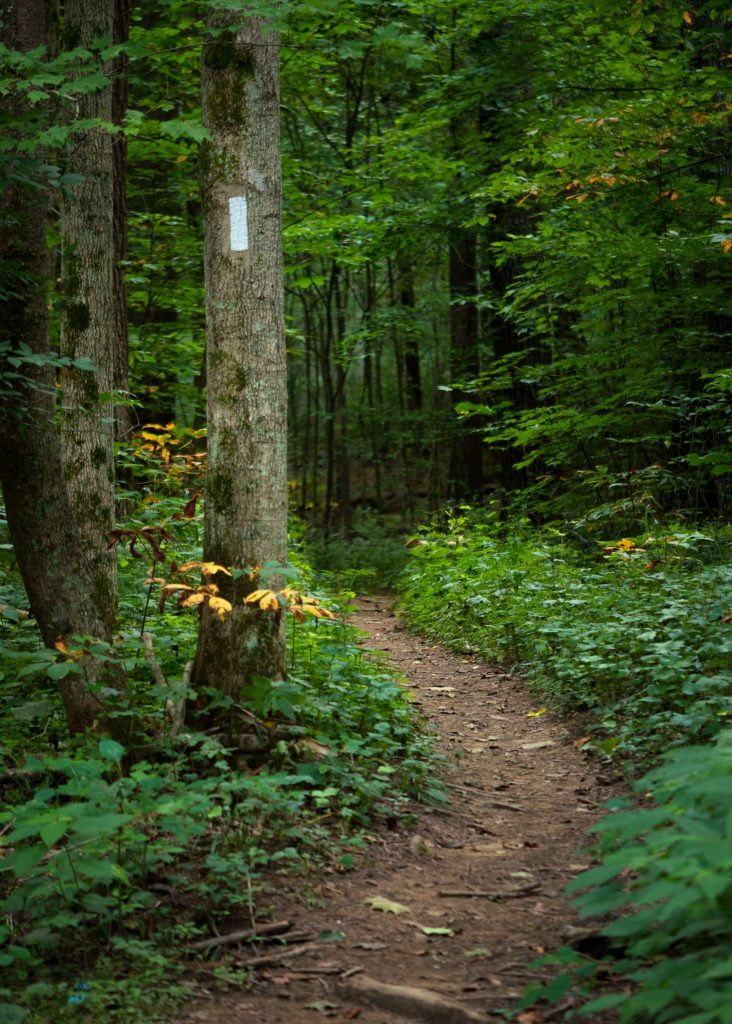
Wildcat Hollow Trail
It was not only science courses that helped prepare Brooks for his current role, though. He also describes his junior composition course, which he took with Dr. David Sharpe, as “fantastic, and a huge eye opener.”
“In part, I owe my job and development to Dr. Sharpe,” he adds.
In Sharpe’s English class, Brooks completed a research project on the geological formations of nearby Old Man’s Cave.
“Old Man’s Cave is a gorge with a very complex history, and my task was to boil that down into a short essay. I had to pull together the information so that the narrative made sense. It was definitely a challenge, but it was also my favorite project in that class,” he states.
The ability to individualize his coursework and projects so that they fit his interests and goals was, Brooks explains, a tremendous benefit of studying at OHIO.
“Ohio University increased my interest in the natural world and my drive to do environmental education as a career. OHIO helped me work towards those goals,” he notes.
Internship and Career Advice
Brooks advises current students to begin their internship search as soon as possible, even during their first year at OHIO.
“Don’t wait! Begin your search early, and keep on doing as many internships as you can,” he suggests.
For those who are preparing for the job market, Brooks recommends searching diligently for job postings and applying widely.
“If you’re a Wildlife Conservation Biology major, you should be prepared to move to a different state or city. I’ve worked in four states, and I view that as a positive thing. I loved it!”



















Comments